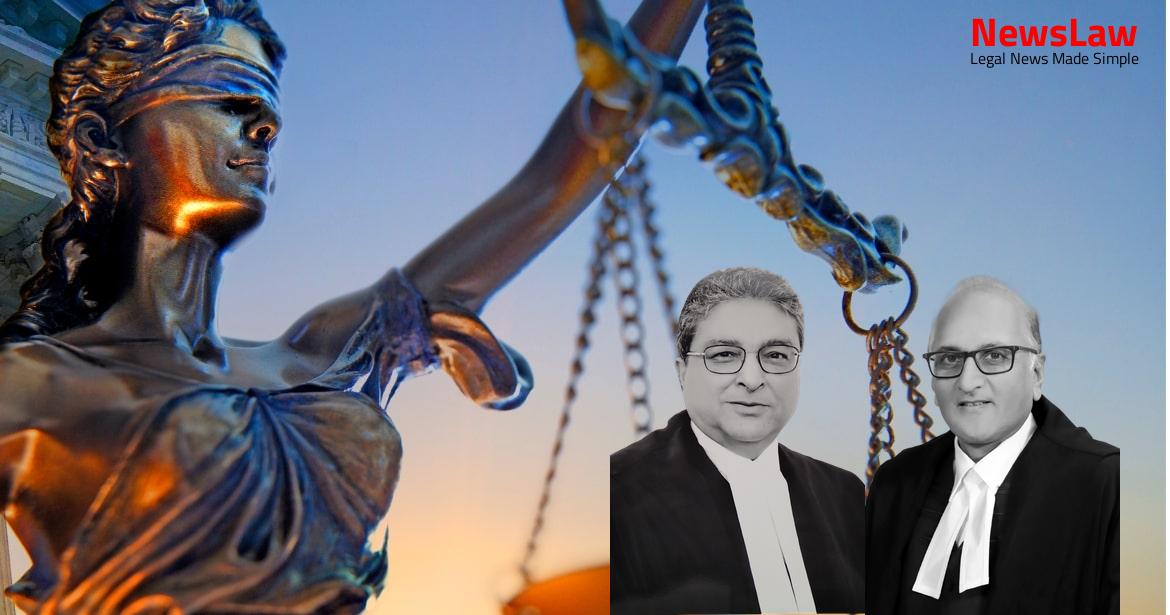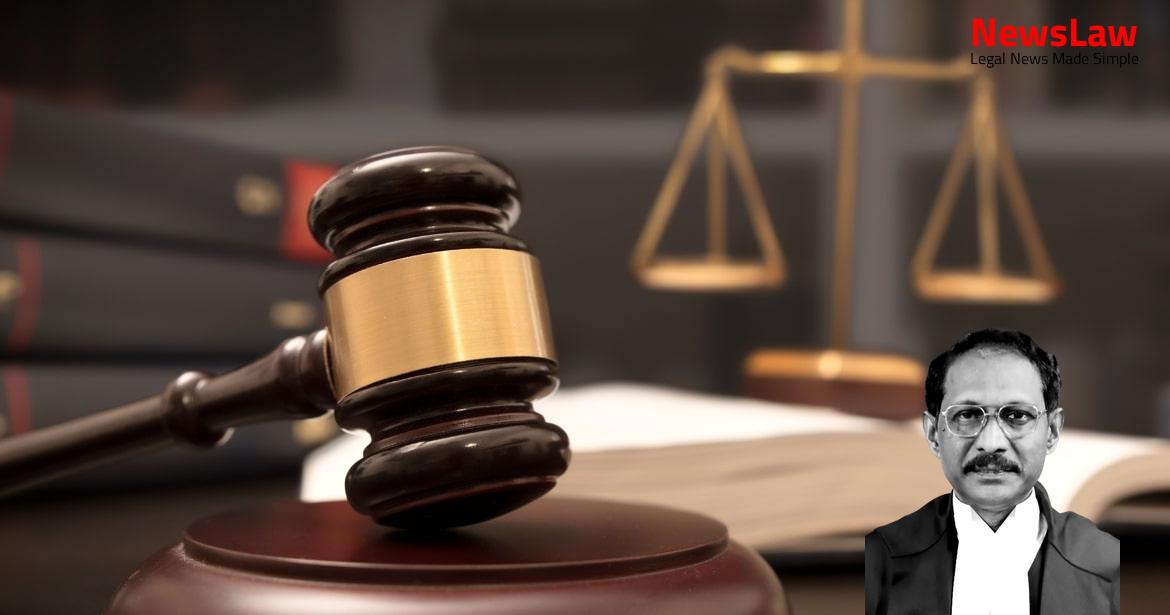In a recent legal case, the court conducted a thorough analysis of the minimum qualifying marks set for teacher recruitment. The focus was on the statutory regulations governing the selection process, shedding light on the importance of consistency and adherence to established criteria. Delve into the complexities of the court’s legal interpretation in this intriguing case.
Facts
- State Government submitted that ATRE-2018 was conducted for filling up 68,500 vacancies of Assistant Teachers.
- ATRE is considered a qualifying examination for a particular year of vacancy.
- Approximately 23,771 Shiksha Mitra candidates secured marks between 40% to 60% in the Reserved category.
- The State Government mentioned that after the examination, only candidates qualifying in merit from the top are entitled for recruitment.
- The total number of candidates who appeared in ATRE-2018 were 1,07,873, out of which 41,556 qualified.
- Total number of Shiksha Mitras who participated in ATRE-2018 were 34,311, and finally 8,588 qualified.
- The passing of ATRE does not guarantee employment as it is just one of the qualifying criteria for selection.
- 60% of the marks scored in ATRE-2019 would determine the quality points for candidates.
- ATRE-2018 and ATRE-2019 candidates were classified into different classes.
- Fixation of cut off at 65-60% aimed to select the best talents.
- Comparison of qualifying candidates and cut-offs between ATRE-2018 and ATRE-2019.
- Different nature and difficulty levels of examinations in ATRE-2019 and ATRE-2018.
- ATRE-2019 had an exclusionary element due to the 65-60% cut off marks.
- Controversy between Shiksha Mitras, State Government, and B.Ed./BTC candidates on the cut-off marks.
- Discussions on the fixation of cut off marks and the legality of the same post-examination.
- Differences in the examination patterns and weightage allocation between ATRE-2018 and ATRE-2019.
- Impact of the 65-60% cut off marks on various categories of candidates.
- Significance of the number of vacancies in relation to qualified candidates.
- Importance of performance in ATRE and the denial of weightage to Shiksha Mitras due to cut off marks.
- Retention of ATRE passing requirement in Rule 14 of 1981 Rules.
- Allocation of quality points based on ATRE performance for merit list preparation.
Also Read: Electoral Malpractices in Mayor Election
Issue
- Different yardstick for Shiksha Mitras compared to fresh graduates in terms of minimum qualifying marks in ATRE-2019
- Question of arbitrary and irrational nature of the fixation of qualifying marks
- Consideration of whether Shiksha Mitras from ATRE-2018 and ATRE-2019 form a single homogenous class
- Examination of entitlement of Shiksha Mitras to relief or preference despite the absence of a specific right
- Importance of ‘minimum qualifying marks’ being truly minimum in nature
Also Read: Balancing Power and Transparency: Electoral Bonds Struck Down, Disclosure Mandated
Arguments
- The contention that Shiksha Mitras who appeared in ATRE-2018 and ATRE-2019 form a homogeneous class is misconceived.
- The selection process was consistent with the statutory regime of 1981 Rules.
- The amendments to the 1981 Rules were not meant to create a new right for the first time with retrospective effect.
- The performance in ATRE is one of the factors considered for quality points in the preparation of merit lists for selection.
- Over 8000 Shiksha Mitras qualified in ATRE-2019, including those who failed in ATRE-2018.
- The amendments were to align the statutory regime with NCTE directives, not to create retrospective rights.
- The distinction in the selection processes for ATRE-2018 and ATRE-2019 is justified by the nature of the exams.
- Even without the consistent statutory regime, candidates with B.Ed. degrees would still be eligible for ATRE-2019.
- Shiva Kirti Singh, J. took a different view in reference to K. Majushree and Hemani Malhotra, leading to the matter being referred to a larger Bench.
- In Sivanandam C.T. and others vs High Court of Kerala and others, the matter of fixing minimum qualifying marks for interviews after the process was completed was referred to a larger Bench based on the decision in Tej Prakash Pathak.
- An observation in Municipal Corporation of Delhi vs Surender Singh and others highlighted clause 25 of the advertisement giving the Selection Board discretion to set minimum qualifying marks, leading to DSSSB setting a cut-off percentage for the selection of Assistant Teachers (Primary).
Also Read: Recall of Resolution Plan Approval: Legal Analysis
Analysis
- The NCTE Act does not pertain to ordinary educational institutions, focusing on teacher training institutions.
- Minimum qualifying marks were fixed to ensure recruitment of teachers meeting a certain standard.
- The authority making rules can prescribe minimum marks for written exams and interviews.
- Prescription of minimum marks for interviews is not illegal.
- Introduction of minimum marks after the selection process is impermissible.
- The selection process consisted of written exams and interviews, with no originally prescribed minimum marks for interviews.
- The field is fully occupied by an Act of Parliament and covered under Entry 66 of List I of Schedule VII.
- Government has the power to determine minimum qualifying marks ‘from time to time.
- NCTE established with the aim of regulating norms and standards in the education system.
- The National Council for Teacher Education has the authority to lay down minimum qualifications for teacher appointments.
- The requirement of minimum marks in interviews cannot be introduced after the selection process is underway.
- Shiksha Mitras could not be regularized as teachers in breach of the RTE Act.
- Candidates not in contest should have no further consideration in judicial review if they secured lesser marks than the last candidate in the merit list.
- Fixing cut-off marks after the examination is over is deemed incorrect and invalid.
- The authorization of NCTE under the NCTE Act and related notifications is legitimate and beyond doubt.
- In the absence of rules, introducing additional aspects in the selection process does not change the ‘rules of the game.’
- The NCTE Act focuses on regulating standards in the teacher education system.
- The NCTE Act provisions were considered in the case of State of Maharashtra vs. Sant Dnyaneshwar Shikshan Shastra Mahavidyalaya and others.
- Coordination and determination of standards in institutions for higher education or research fall under Entry 66 of List I of Schedule VII to the Constitution, and the State cannot encroach upon the legislative power of Parliament.
- The Council has the duty to ensure planned and coordinated development of teacher education, maintaining standards, and performing other functions entrusted by the Central Government.
- The decision in K. Manjusree pertained to assuming no stipulation regarding minimum qualifying marks for interview.
- The existence of vacancies doesn’t give a legal right to a candidate for selection.
- Government has the discretion on the number of appointments to be made.
- Minimum marks prescribed by the authority determine a candidate’s success and grade placement.
- Amendment was given retrospective effect to maintain consistency with the notification.
- B.Ed. candidates were rightly allowed to participate in the selection process.
- Selection for appointments must be strictly in the order candidates are listed.
- Additional norms laid down by the State are applicable and enforceable.
- Merit should be determined based on the examination undergone by the candidates.
- Shiksha Mitras with teaching experience cannot be equated with fresh graduates.
- The State’s statutory regime must align with the binding notification.
- Minimum qualifying marks should not be set after the competitive examination process.
- Competitive examination standards must conform to governing rules set prior to the examination.
- The selection process should not deviate from the initial criteria during or after completion.
- Division Bench of the High Court’s view on the fixation of cut off at 65-60% after the examination was over
- Affirmation of the High Court’s view by the Court
- Conclusion that the cut off at 65-60% was permissible
- Association of Shiksha Mitras’ appeal for absorption and objectives under the RTE Act
- Government’s right to fix the cut off
- Negation of the challenge by Shiksha Mitras
- Dismissal of appeals by Shiksha Mitras
- Inability to grant the prayer based on the decision in Anand Kumar Yadav
Decision
- The State Government has discretion to offer another opportunity to Shiksha Mitras for the next selection.
- Ex-servicemen and persons with disabilities can challenge the low number of applicants in their categories in separate proceedings.
- The State is instructed to declare the results of the examination held on 6.1.2019 promptly as per government orders and previous court directives.
- The State Government is authorized to fill up all posts based on the result declared on 12.05.2020 and in compliance with the law.
- Writ petitions by B.Ed./B.T.C. candidates, Contempt Petition, and Intervention Applications have been resolved with the 65-60% cut off criteria deemed valid. Dismissal of appeals with a reminder to follow rules for vacancies in specific categories.
Case Title: RAM SHARAN MAURYA Vs. STATE OF U. P. (2020 INSC 646)
Case Number: C.A. No.-003707-003707 / 2020



